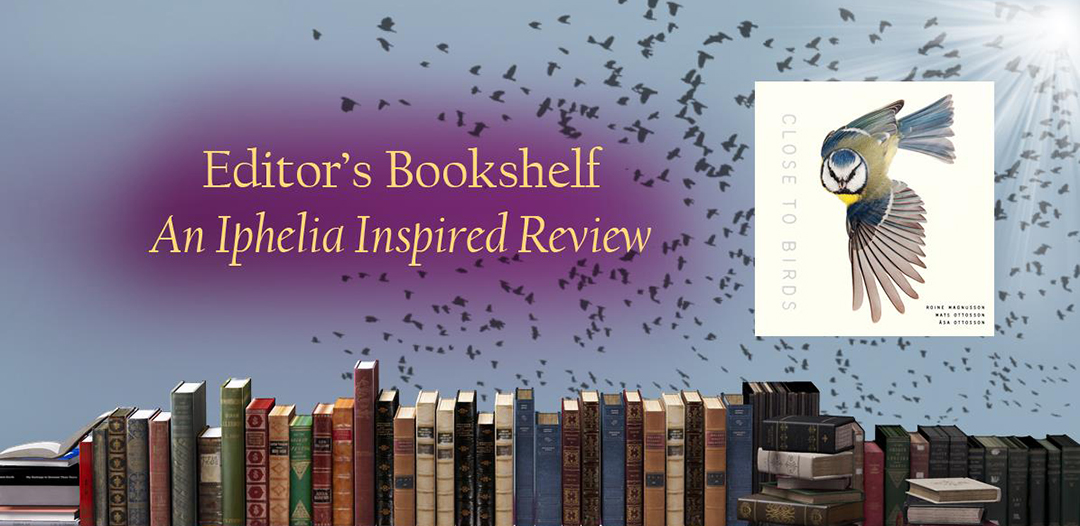
Last week, my husband and I had to have a big, beautiful ash tree removed from our yard. It was a loss we both felt deeply, partly because we adore the wildlife in our yard and worried that the absence of the ash would mean fewer critters—both ground dwellers and winged ones. We’ve been blessed with regular cardinal sightings and are accustomed to the hooting of an owl—or owls—through the night. Thanks in part to the many trees in our yard, we’ve grown close to birds, both in proximity and in our mindsets. We appreciate the life the birds bring to our surroundings and the messages they seem to offer us at timely moments.
A few months ago, I started noticing and collecting fallen feathers. First up, a red-shouldered hawk feather that I spotted by my van tire after a long day at work. It was a spectacular find and has been followed by many more. When I had the opportunity to read and review a book on birds—Close to Birds, with images captured by Swedish photographer Roine Magnusson and text by Swedish journalists, authors, and lecturers Mats and Asa Ottosson—it seemed fitting.
This book’s a whopper with striking full-color images that do indeed bring the reader closer to birds. I love that it opens with an e e cumming’s poem then goes on to introduce, in very plain language, a host of awe-inspiring bird facts and research. I could hardly believe my eyes as I read about birds that fly nonstop for months or more—resting half their brains at a time—from distant point As to point Bs. I appreciated the writers’ discussion of why when we dream of flying we dream ourselves birdlike (something I’ve seldom experienced but know is a common motif among dreamers) and their observations on how birds prove our connectedness across borders, oceans, hemispheres, and seasons.

While this book is a far cry from Animal Speak, it will interest anyone who’s felt close to birds, from birdwatchers and biologists to those who study the archetypes in their waking lives and dreams. The images alone are stirring; the text, something to learn from—maybe not in one fell swoop, but bit by bit, whenever one wants to inch a little closer to an understanding of the avian world.
As I flipped through Close To Birds for the first time, I thought of the owl motif in Iphelia. As I review it, a lyric from “Everybody Needs Love,” cowritten by Ed Townsend and Marvin Gaye for his 1978 album Here, My Dear (which is worth a listen and reading up on—talk about feeling!) comes to mind:
See those flowers, they need love
See the bluebirds, they need love
See the babies, they need love
All God’s children, oh need love
See your mother, she needs love
And my father, he needs love
That’s true baby, and I need love too
It seems we are indeed close to birds, no matter what we are, “a thief, or a beggar, or even a superstar.”
Editor’s Bookshelf is a regular review of soon-to-be-released books that, in the spirit of Iphelia, asks important questions about how the written word—and in some cases, imagery—are used to help readers reconnect with their feelings, themselves, each other, and the world around them.
Iphelia’s editor, Linsey Stevens, answers these questions—chiming in on who will be most captivated by each book’s contents and how it invites readers to return to a heart-centered way of being.
Close to Birds, translated by Kira Josefsson, with images captured by Roine Magnusson and text by Mats and Asa Ottosson, will be available on October 22, 2019, from Roost Books. To learn about how we can make our environments more hospitable to bird life, check out Vox’s reporting on why “a new study [found] 3 billion fewer birds are flying through our skies” and what we can do about it. For more on Iphelia: Awakening the Gift of Feeling, visit our book page.

